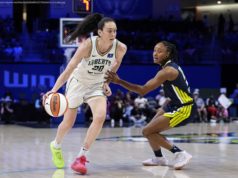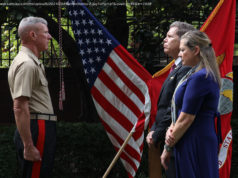The leadership journey is not a solo one. It’s about finding our community – kindred spirits who can help us amplify our best self and our ability to have impact.
Seven years ago Ravenscroft School in Raleigh embarked on a bold new experiment. Recognizing the changing nature of work and society, the school’s leadership decided that it could no longer leave leadership development on the edges of the student experience. The result was a strategic vision for the school centered on preparing next generation “citizen leaders.”
In partnership with the Center for Creative Leadership (where I am affiliated), we began a six-month “discovery” process – interviewing stakeholders, surveying parents, and evaluating the curriculum. Drawing on these insights as well as promising practices from other schools globally and extensive research from CCL (including input from 462 executives on the skills required for next generation leaders), we then began to dream about what an intentional, fully integrated leadership development experience might look like.
The resulting framework is called “ Lead from Here ” with three primary components: leading self, leading with others, and changing your world. Leading self is comprised of five leadership competencies: self-awareness, growth-mindedness, accountability/ conscientiousness, motivation, and resilience. As I reminded the graduating seniors in a recent commencement address, it’s about discovering and rediscovering what one’s strengths, passions, and values are. What gives us joy and makes us come alive.
Once we find our own leadership voice, it’s about building strong relationships and leading with others. The leadership journey is not a solo one. It’s about finding our community – kindred spirits who can help us amplify our best self and our ability to have impact.
It’s also about connecting with people different than we are – that can challenge our beliefs, provide us with different perspectives, and open our eyes to the magic of our planet and society’s diversity. At Ravenscroft leading with others is defined as being culturally inclusive, communicative, collaborative, empathetic, and ethical.
And as we expand our horizons, and open our eyes and heart, we discover problems and opportunities that we can’t turn from. We won’t be able to solve every problem that is out there – but by being visionary, strategic, reflective, adaptive, and resourceful we can enhance our chances of “changing our world.”
As Ravenscroft students progress throughout their learning journey, they go through a set of developmentally appropriate, highly experiential leadership cycles starting with Leading Self in grades K-2,6, and 9, then Leading with Others in grades 3-4,7, and 10, and Changing your World with “change-making” projects in grades 5,8,11-12.
All faculty and school leadership contribute to the design process and receive ongoing professional development and parents are given training and tools to help reinforce the concepts. Throughout the deployment of this initiative, extensive evaluation has been conducted to determine efficacy and opportunities for improvement.
The results have been profound. As one parent says, “Watching my senior embrace (Lead from Here) is amazing. He is now willing to take ownership of his mistakes, take risks… and be far more collaborative.” And Ravenscroft itself has emerged as a model for 21st leadership development education.
The goal for Ravenscroft and CCL is to now share this model with other private and public schools in the Triangle and across the country recognizing that all students (and our overall society) benefit when they have the mindset and skillsets to become true citizen leaders.
Note: After eight years and more than 200 columns together, Stephen Martin is stepping away given his growing work demands. As I carry on please share suggestions for columns focused on ideas and initiatives having a positive impact on our region and state.






